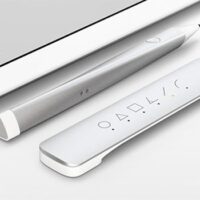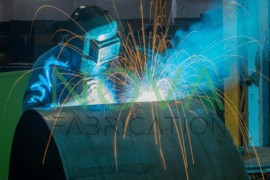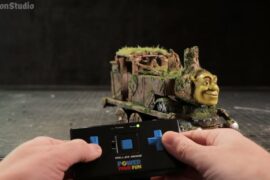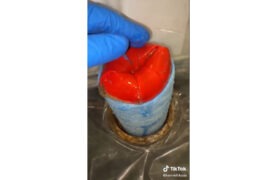There are ever-increasing piles of 3D prints being amassed upon the earth–single-color, multicolor and a healthy amount of plastic squiggles that didn’t quite make it through the process. It’s sometimes (always) nice to know how people are going about building and creating the contraptions that lead to hours of tinkering and even more hours of creating a form layer-by-layer. While there are some companies who prefer not to show their technology or prints results *ahem*, there are others who do and want to share it with us geeky, like-minded individuals. Richard Horne, aka RichRap, goes into deep, delightful detail about his 3D printing adventures, showing you what has worked, what hasn’t worked so well with a hefty dose of 3D printer development along the way. This is his story…
Adventures in DIY 3D printing
When you ask someone what their adventure of choice may be, you’ll likely get a response like skiing, backpacking or a clever person quoting Yoda, “Hmph. Adventure. Heh. Excitement. Heh. A Jedi craves not these things.” Either way, most wouldn’t put ‘making 3D printers from scratch’ on that list. Rich does and he’s dang passionate about it. Since 2010 he has documented his activities on his blog. Best of all, he provides videos where he talks about the process. (He also has a Youtube channel where you can catch all of the videos.) I asked him what sparked his interest in 3D printing and what led to the multi-color printing.
Richard Horne (@RichRap3d)
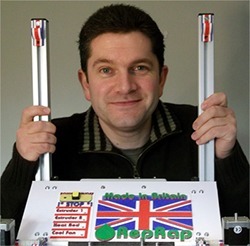
I have always had an interest in 3D printing from the early days, seeing it on TV in the 80’s then using industrial machines for product design and development in the electronics industry for various products and customers. Along with design, I do a lot of Sales and Marketing now; still in the electronics industry so DIY 3D printing helps me keep my technology edge, and gives the technical side of my brain something to do.
I’m rather passionate about all things involving 3D printing and the whole additive manufacturing industry. It started as a hobby and I greatly enjoy every aspect and challenge. It’s also fantastic to be involved in a global technology project like RepRap.
The interest in DIY 3D printing started by following the RepRap project. Around 2009, I started looking at building up a machine. (At that stage things were still in their early days of developments and many parts needed to be made by hand.) Nophead’s Blog was a real wake up call to me. When I started reading it, I immediately decided this was going to occupy any spare time I had.
I made the mistake (many still do) by thinking I needed to build a much more solid machine with industrial parts than the simple threaded rod and plastic parts used on most early RepRap 3D printers. So my first printer was more like a CNC milling machine–very slow but quite accurate–and still a long way from a really useful device. That was during the summer of 2010. That September, I started blogging my 3D printing adventure.
Bring on the multicolor
I admit, I’m a bit jealous of Rich’s exploration into materials, especially his detailed post on tie-dyed nylon printing. I liken the color combination to my grandma’s basket of knitting yarn and the results to a comfy, woolen sock cap. (The fashion industry is going to EAT THIS UP.) Here he talks about 3D printing with Nylon, explaining the material, best practice and how he went about dying it.

I always had a plan to print more interesting objects using more than one colour; the desire for colour 3D printing was inspired from childhood memories of doing scraperfoil artwork and colouring them with inks. From this moment the idea of colour 3D printing was getting closer to be a reality, some of the first different coloured PLA filaments were starting to come out of China and a few European manufacturers were also experimenting.

After that It was a roller-coaster of experiments with materials like Polycarbonate, other printer designs and getting better at the art of 3D printing, it’s still a long way from click and print that people would actually want, so you do need some dedication or interest in the technology to get the best from existing 3D printers. I experimented with Chocolate and Ceramic based 3D printing, as a side note the Chocolate printing is the second top thing I get contacted about still to this day.
A lot of people around this time were showing off nice prints and not many people were talking about the failures, disasters and general trouble you get with 3D printing, so I posted a blog about 3D print failures and we started a Flickr Group that got a lot of interest and assisted people into talking about better ways to print successfully.
More Extruders, more colors
In another excellent post, Rich experiments with printing multiple colors of with a 3-way extruder assembly and a hot-end he made himself with a Pillar drill, a hack saw and other hand-tools (someone get this man a new lathe!). The results are lovely and definitely adds another visually pleasing dimension to the standard monchromatic models that are the norm. Here is Rich’s breakdown on the process and a few of the prints made with, in order, one extruder running, two extruders running, three extruders running and a detail shot of the three-color build-up.

The Future of 3D Printing
I have really enjoyed experimenting with materials, designs and electronics and still have so many more things planned to do or revise and revisit. Along with general experimentation, my focus at the moment is to get back to more RepRap related design and developments. The rise of commercial low-end and consumer 3D printing has had a very positive impact on the amount of people using and being aware of this technology. These range from very low cost kits to printers described as more ‘prosumer’ or semi-professional printers.
The RepRap project is about a self-replicating machine. We see more and more movement away from a self-replicating nature and more reliance on machining parts or whole machines using industrial manufacturing techniques to produce kits in high volumes for commercial sale. Much of this is coming from the pure market demand for more and more 3D printers, scaling up using industrial processes is an ironic nod back to the mass market manufacturing model. The RepRap project is like a virus, so any way to replicate and manufacture is valid as long as it’s in the spirit of, and hopefully with, an open philosophy. It makes me smile the think when most people started with DIY 3D printing, they had to make a machine out of wood or get 3D printed plastic parts from one of only a few sellers in the world. Now, just a few years later, it’s a very different story.
It’s always great to see this technology being used to build businesses, that’s a very important part of the growth and acceptance of making 3D printers more accessible to many more people, but it’s a general observation that the more users there are and the more printers being made does not seem to translate to more innovative RepRap-based 3D printers. Maybe we are seeing a plateau of technology in the DIY sector as many of the early developers decide to invest more time into businesses and commercial ventures than in the early days. It will certainly be interesting to see how this all evolves, what stays open and what new aspects become patented or restricted again.
What is really fantastic is that many more people are using 3D printers as a tool to do all sorts of other amazing things for hobbies and commercial new adventures. This is a clear message that 3D printing is enabling many people to be self-creative and physically supply custom items to meet the exact need. Many people doing great things contact me planning to setup businesses that would just not be possible without 3D printing.
I was a latecomer to Youtube, blogging and Twitter, and along with other sited like Thingiverse and GitHub they are now all a big part of the way the maker movement is sharing and collaborating together.
Even though this industry is 30+ years old, it’s only now getting mass market focused–it’s very exciting–with a lot of hype and ultimately some disappointment associated with the realities of what’s possible with this technology now and in the immediate future, but this time around it’s not just the very big suppliers that are getting all of the market. 3D printing spans across a wide range of interests and will find applications in both the niche and high-profile sectors of our every lives.
My kids play a very important part in my 3D printing adventures, without them many of the things I have done would simply not have happened. Kids see no boundaries, no restrictions and no reason not to try, so as long as you don’t say no, but instead ask how, all sorts of things come to mind. Along with the work published on my blog, I have designed and printed countless things for my kids, their friends, parties, clubs, rewards and awards. They value them as they had a hand in the design and creation process. It’s going to be wonderful to see what future generations use this technology for.
My 3D printing adventure continues…














